Awakening with the dawn each morning, I am greeted by the breathtaking beauty of the sunrise. It is undeniable that nature inspires, motivates, and prepares us for the day’s challenges. Amidst the busyness of daily life, taking a stroll through my neighborhood surrounded by majestic oak trees not only reenergizes me but also brings a sense of peace and tranquility. I’ve noticed a decrease in stress levels and an increase in overall well-being when I make time for these walks. Nature, truly, is a sanctuary of calmness and serenity! How does nature inspired your creativity?
Nature inspired artists, poets, writers, and philosophers. The natural world surrounding us is filled with wonders, from the towering mountains to the deep blue sea and everything in between. As we observe nature around us, we can see that specific aesthetics are intrinsic to it. In this blog post, we will explore the aesthetics of nature and how they contribute to the beauty surrounding us. We can look to biomimicry, a widely recognized “bio-” approach, which is the conscious emulation and translation of biological principles to yield solutions that adhere to biological principles. Children are naturally drawn to the beauty of nature, whether it be the brilliant colors of a sunset, the intricate patterns of a snowflake, or how leaves change colors in the Fall. Nature offers an opportunity to explore the aesthetics of our local communities. To introduce this aesthetic to young children, go on nature walks and encourage them to observe the natural beauty around them. Listen to how they describe what they see and what engages their curiosity. Ask children to describe what they see, how it makes them feel, and what they think about it. As you design a play ecosystem, consider how children relate to and think about nature. Using their descriptions can help create spaces responsive to the children’s innate connection to nature.
The Beauty of Nature Inspired Ecosystems: Exploring the Aesthetics of Nature
Patterns: Nature’s patterns offer the aesthetics of function. Natural patterns and systems can guide the way early childhood ecosystems are designed. Patterns can help us understand the aesthetics of natural patterns. These inherent patterns in nature are more than visually aesthetic; they connect to our human psyche. Both adults and children are drawn to nature’s patterns and find solace, inspiration, and balance within them. They serve as a reminder of the interconnectedness of all things and the delicate equilibrium that sustains life. Another example of how natured inspired design.
Whether observing the mesmerizing ripples in a pond, exploring the beautiful tessellations in a honeycomb, or the lines in a spiraling fern, children’s emotional and physiological responses are deeply intertwined with these natural designs. This connection is not merely aesthetic. Nature’s patterns influence well-being, reduce stress, foster relaxation, and connect us to the vast web of life surrounding us. Incorporating natural patterns in the classroom ecosystem can induce feelings of calm, reduce stress, and even stimulate cognitive functions. These nature inspired ecosystems create breathtaking spaces that not only support but also nurture children’s growth and development, giving us hope for a brighter future.
Invite children to experience the beauty of nature with a sand and water table. Instead of cluttering it with various materials, let the sand and water take center stage. The deep terracotta Jurassic Sand in the photo connects children to the natural colors. The softness of the sand invites tactile exploration.
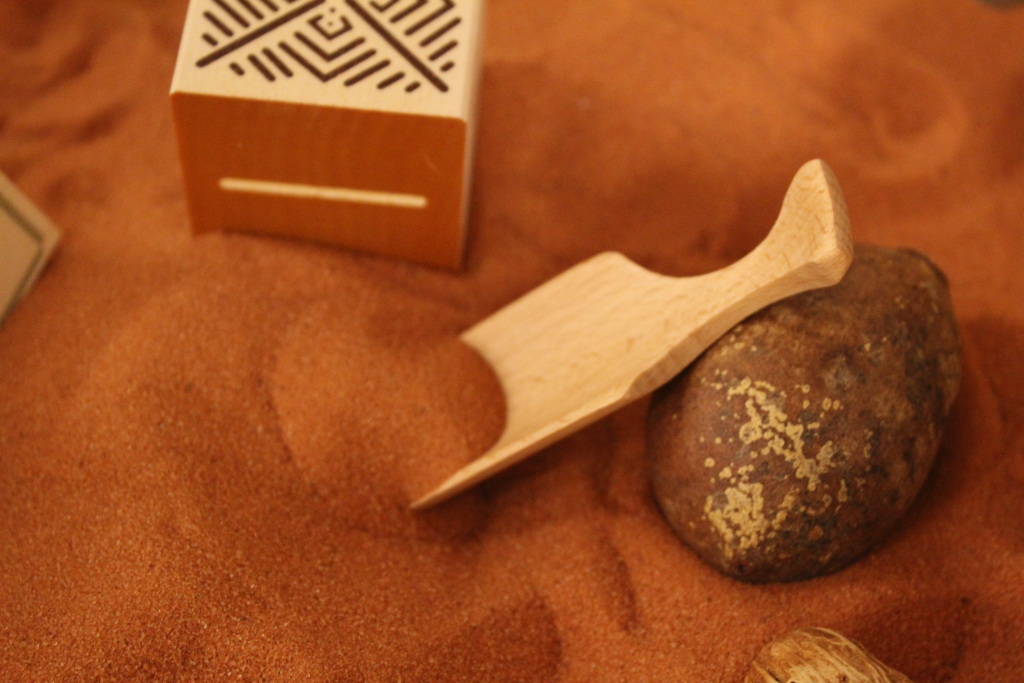
Rhythm: Children thrive on routine and structure, so it’s no surprise that they appreciate the order in nature. Encourage children to observe the patterns and cycles in nature, such as the changing of the seasons or the moon’s phases. Use the systems in nature to establish rhythms that support children. Rhythm has the unique power for healing and neuroplasticity. It helps organize events into predictable and coherent patterns. This nature inspired rhythm has profound effects on the brain, including influencing perception and thinking.
Create play invitations for children to explore the harmonious melodies of nature through the enchanting fusion of musical instruments and natural materials.
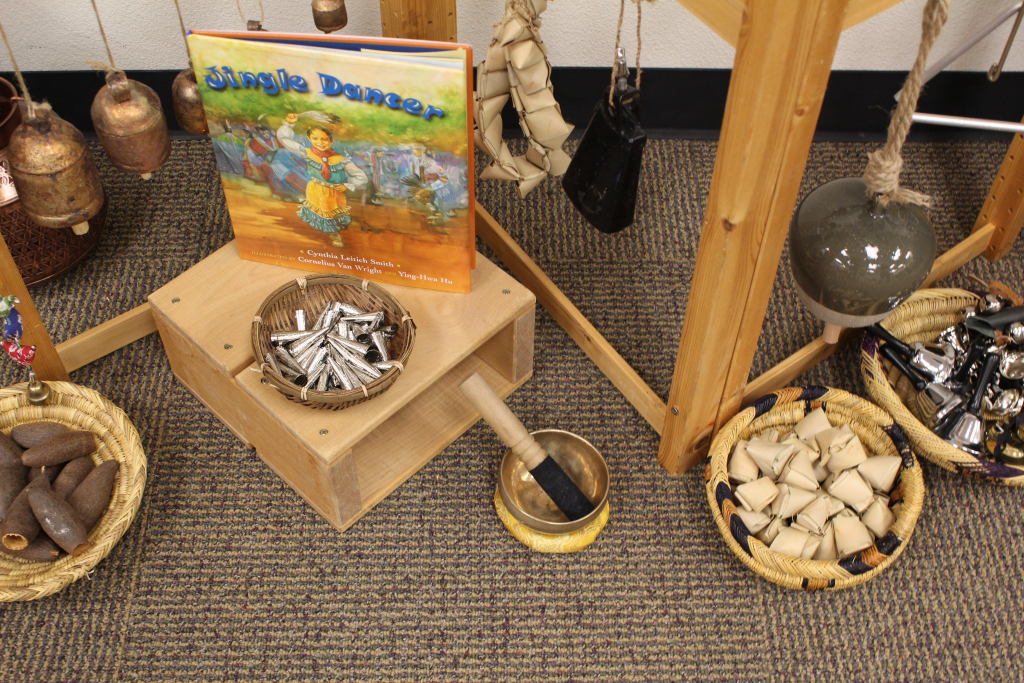
Diversity: The celebration of the many different forms that nature takes. Diversity is all around us, from the myriad colors in a sunset to the various species of animals found in a forest. Diversity gives nature its richness and vibrancy, and it is a reminder that there is beauty in difference. In our modern world, we must celebrate diversity in nature and our communities to create a more prosperous and more beautiful world. To cultivate equitable and inclusive spaces in early childhood classrooms, we must view them as thriving ecosystems that embrace diversity. Like in a biological community, an early childhood ecosystem encompasses variations in human diversity, relationships, rhythms, and system patterns. To truly appreciate the beauty of nature and its impact on our spaces, it is crucial to observe how children naturally engage with their surroundings. They notice how certain insects rely on plants for food and how a garden thrives when nurtured with water and fertilizer. By witnessing the nature inspired diversity, children can begin to understand and value the contributions of human diversity. This fosters a sense of responsibility toward sustaining positive relationships and caring for the environment.
Working with natural materials like clay to create artistic works is deeply profound. As children’s fingers sink into a damp lump of earth and form it into new shapes, they feel a visceral connection to our planet and the natural world in a way that leaves them calm and centered. This therapeutic process of transforming raw clay into functional pottery, sculpture, or other ceramic objects has been practiced by cultures throughout history worldwide. Various ceramic traditions developed independently in different regions show how this simple material allows artists to express their cultural identities and perspectives. Clay showcases this natural medium’s endless possibilities and the powerful emotional link it can foster with nature.
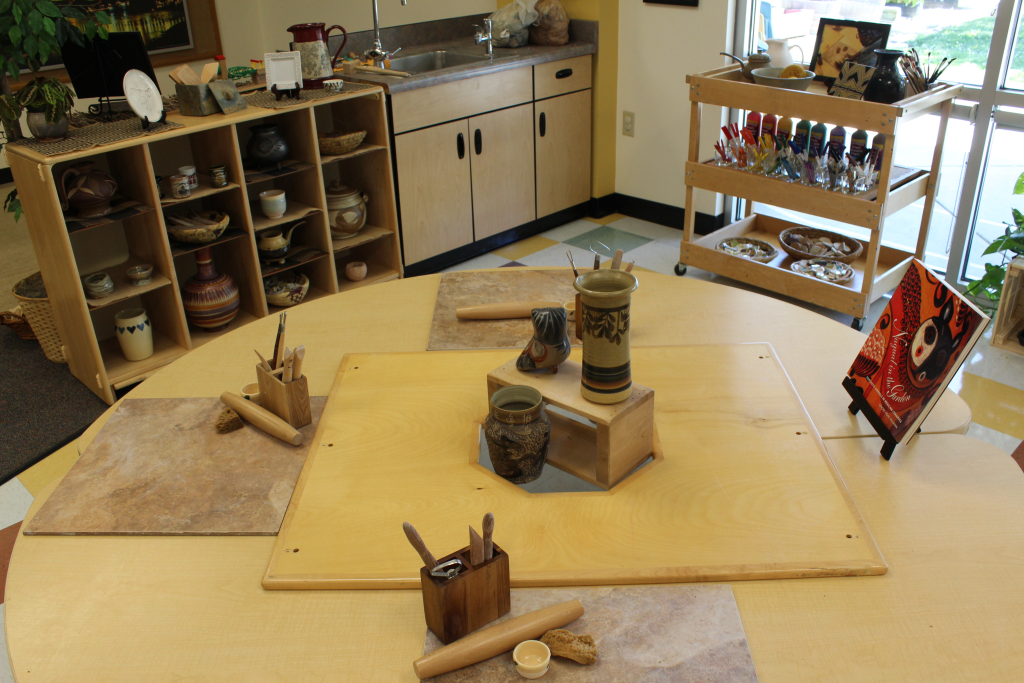
Mystery: Nature is full of mysteries, from the secret lives of animals to the inexplicable beauty of a rainbow. Encourage children to ask questions, wonder, and explore. Mystery elicits a strong pleasure response within the brain. A feeling of anticipation that is pleasurable because we are invited to guess what may be around the corner. The benefits of mystery include an improved preference for space, heightened curiosity, and increased interest in gaining more information.
Mystery brings essential aesthetics into an early childhood classroom (ecosystem). Spaces where children can explore “hide and reveal.” engage their sense of wonder. Pathways that lead to unexpected findings. Simple changes that create invitations to explore materials in a new way keep children’s curiosity engaged.
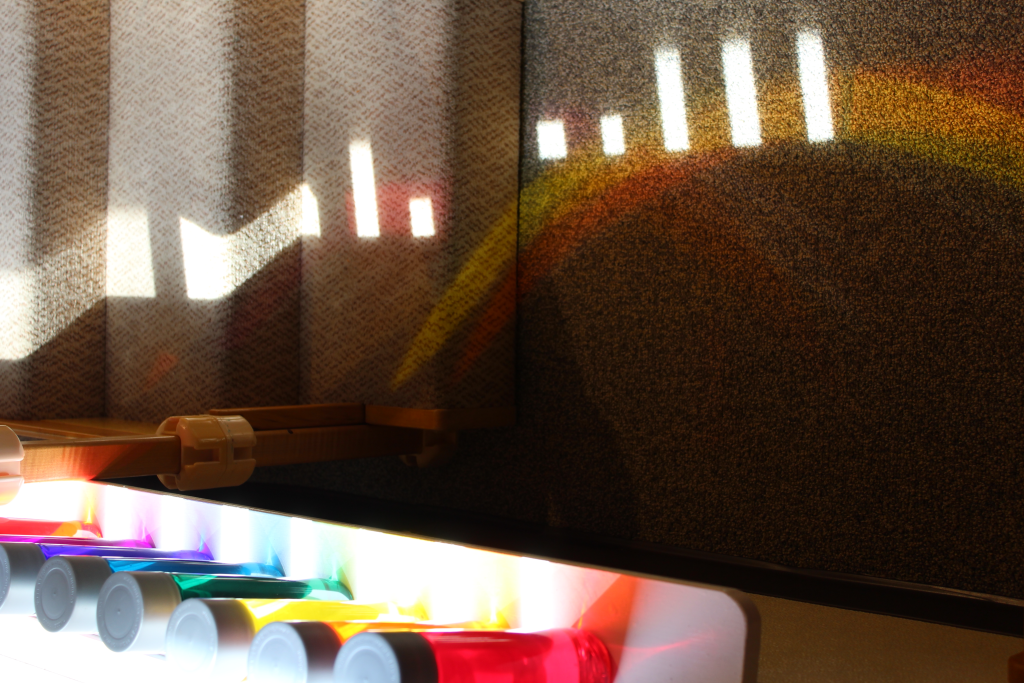
Discover the captivating mystery of light in our daily lives and the wonders it unveils. Let light spark children’s curiosity as they witness its enchanting dance on water bottles. Experience how light nurtures a sense of wonder in early childhood, igniting a lifelong fascination with the world.
Unity: The idea that everything in nature is connected. All the elements in nature, from the smallest atom to the most giant galaxy, are interdependent and work together in harmony. This can be seen in how plants and animals cooperate in an ecosystem or how the seasons flow into one another. Unity is a reminder of how humans are also interconnected with nature and each other and how we are responsible for maintaining balance and harmony in the world.
Using natural and organic shapes, textures, and colors creates a sense of unity that is inviting and connects children to the space. Unity is also achieved when we see the classroom ecosystem as a whole. Noticing how children move and interact with peers, materials, and adults enhances unity and creates a more significant organic flow.
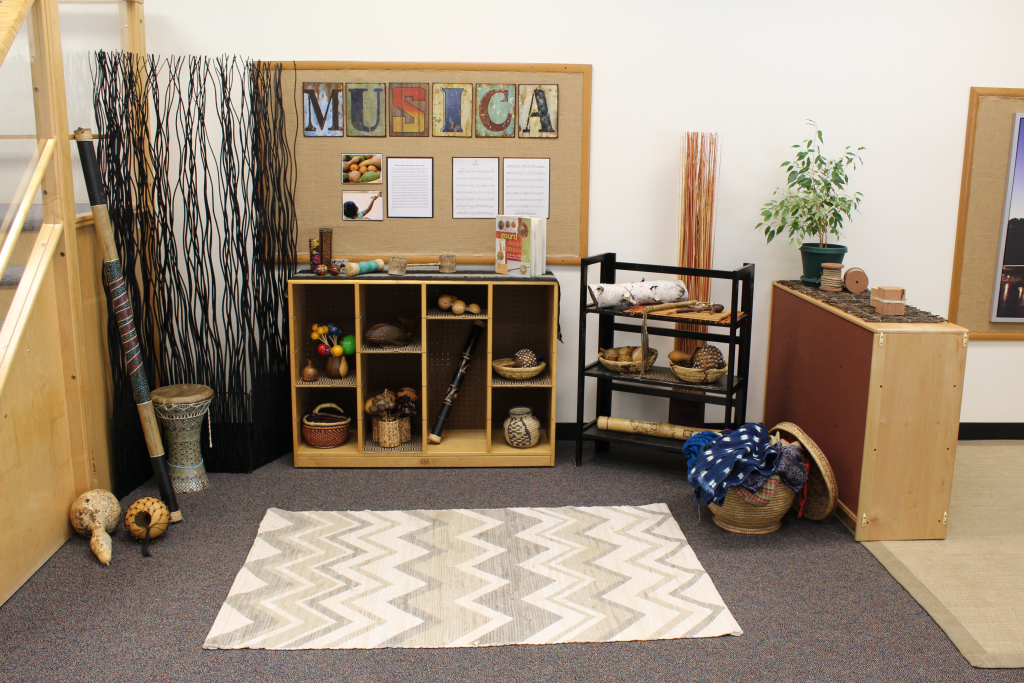
Harmony: The idea that everything in nature is in balance and equilibrium. This is evident in how the natural world works like a finely tuned machine, with all the elements working together to maintain equilibrium. When balance is disrupted, it can have catastrophic consequences, as we have seen with climate change and other environmental issues. As we strive for balance in our lives, we must also work towards balance in the natural world to create a beautiful and sustainable planet. In biophilic design, it’s not just the presence of natural materials that’s important. Balance is achieved when the different indoor elements (such as lighting, air quality, and views of nature) combine to optimize the built environment. Harmony is in natural patterns like the circles and spirals in seashells or ocean waves. Harmony is also present in the sounds of nature, such as the chirping of birds or the rustling of leaves. It is impossible to deny the beauty and peace that comes from being surrounded by natural harmony, and it is something that we must strive to maintain to create a world that is peaceful and thriving for all.
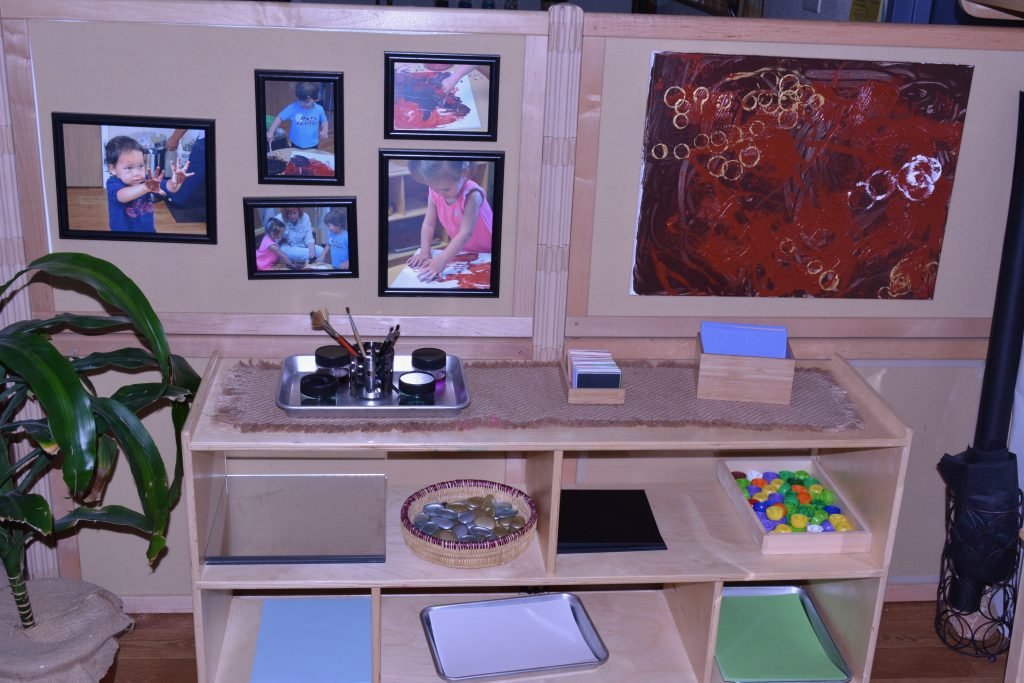
Context: It is essential to understand that child development and learning occur within a social-cultural, community, natural, political, and historical context. Each person’s experiences may vary within that context based on their social identities and intersectionality. The aesthetic of the natural context in each community (rural, urban, or suburban) strengthens the appreciation of children’s interactions and respect for nature. For instance, children living in neighborhoods closer to the ocean can thrive when exploring the beauty of sand and water and the value shells have within the ocean ecosystem. Children who live closer to the mountains will benefit from seasonal changes, including the colors of the deep colors of fall leaves and the coldness of the snow. Children living in farming communities cherish the rhythms of nature as they plant and harvest each year.
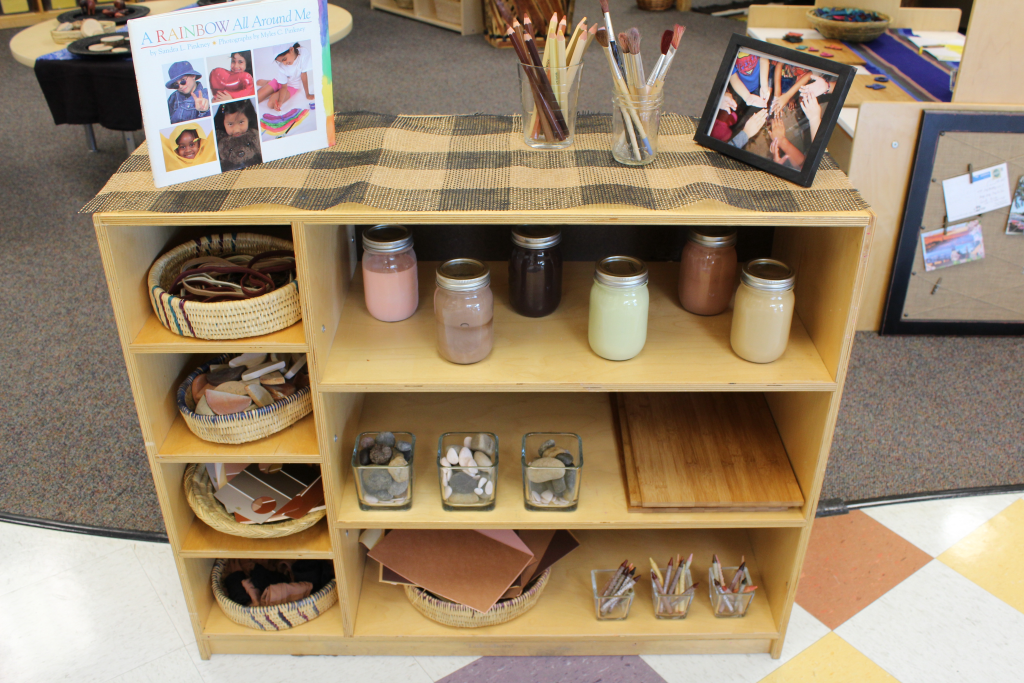
As we have seen, the aesthetic of nature is all around us, creating the beauty and wonder we see. As we work towards sustainability and protecting the environment, we must keep these aesthetics in mind and strive to maintain them. By doing so, we can create a world that is not only beautiful but also sustainable and thriving for generations to come. Introducing young children to nature’s aesthetics benefits their development and connection to the world around them. By nurturing an appreciation for nature’s beauty, order, diversity, and mystery, we are setting up our children for a lifetime of curiosity and exploration. As early childhood educators, it’s our responsibility to create opportunities that foster this connection and encourage children to explore the world around them.
Please share with us how you infuse the aesthetics of nature into your early childhood ecosystem.